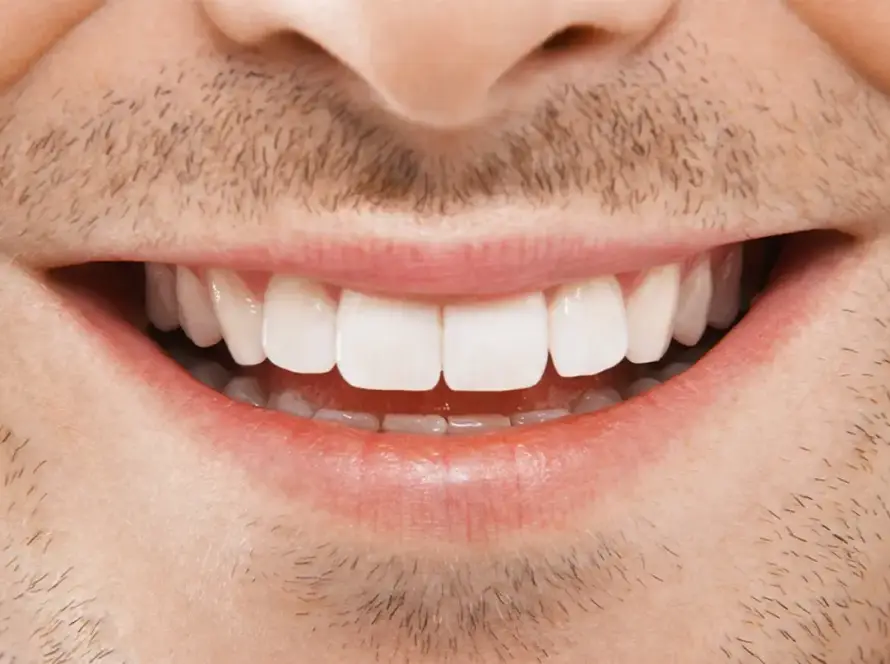Understanding dental health is crucial for making informed decisions about treatment options. Dental health encompasses various aspects, including the prevention, diagnosis, and treatment of conditions affecting the teeth, gums, and mouth. Effective dental care involves regular check ups, proper oral hygiene, and timely treatments. This section explores the fundamentals of dental health and outlines common treatment options available to address dental issues.
Key Components of Dental Health
- Preventive Care
- Regular dental check ups.
- Professional teeth cleanings.
- Fluoride treatments.
- Dental sealants.
- Proper Oral Hygiene
- Brushing teeth at least twice daily.
- Flossing daily.
- Using mouthwash to reduce plaque.
- Diet and Lifestyle
- Limiting sugary foods and drinks.
- Avoiding tobacco products.
- Consuming a balanced diet for optimal oral health.
Common Dental Conditions
- Tooth Decay: Caused by plaque buildup leading to cavities.
- Gum Disease: Inflammation and infection of the gums.
- Tooth Infection: Resulting from untreated cavities or gum disease.
- Tooth Loss: Occurring due to decay, injury, or disease.
Treatment Options
Root Canal Treatment
- Purpose: To save a severely infected or decayed tooth.
- Procedure: Removal of the infected pulp, cleaning, and sealing the tooth.
- Advantages:
- Preserves natural tooth structure.
- Restores normal function.
- Reduces risk of further infection.
Tooth Extraction
- Purpose: To remove a severely damaged or infected tooth.
- Procedure: Complete removal of the tooth from the socket.
- Advantages:
- Eliminates the source of infection or pain.
- Option for further restorative treatments, such as implants.
- Prevents the spread of infection to adjacent teeth.
Factors Influencing Treatment Choice
- Severity of Infection or Decay
- Condition of Surrounding Teeth and Gums
- Patient’s Overall Health and Preferences
- Long-term Oral Health Goals
- Cost and Insurance Coverage
Understanding these key aspects allows individuals to collaborate effectively with their dental professionals to select the most appropriate treatment. Selecting the right treatment depends on the specific dental issue, patient circumstances, and the goal of maintaining optimal oral health.
What is a Root Canal? A Comprehensive Overview
A root canal is a dental procedure intended to treat infection at the center of a tooth. Often conducted by endodontists, it aims to save a tooth that has been severely damaged or infected.
Purpose of a Root Canal
The primary objective is to remove infected or damaged tissue inside the tooth. The pulp, which consists of nerves and blood vessels, can inflame or become infected due to decay, repeated dental procedures, or cracks.
Steps Involved in a Root Canal Procedure
- Diagnosis and X-ray: The dentist diagnoses the issue through clinical examination and x-rays to assess the extent of the infection.
- Anesthesia: Local anesthesia is administered to the affected tooth and surrounding area to ensure comfort.
- Access Opening: An opening is made in the crown to access the infected pulp chamber.
- Cleaning and Shaping: Special instruments are used to remove the infected pulp, clean the canals, and shape them to prepare for filling.
- Filling: The cleaned canals are filled with a biocompatible material called gutta-percha, which is sealed with adhesive cement to prevent further infection.
- Sealing and Restoration: The opening is sealed with a temporary or permanent filling. Most often, a crown is placed later to restore the tooth’s function and appearance.
Benefits
- Pain Relief: Alleviates severe toothache caused by infection or inflammation.
- Preserves Natural Tooth: Maintains the natural tooth structure and aesthetics.
- Functional Restoration: Restores normal biting and chewing functions.
Indications
- Deep decay, causing substantial pain or sensitivity.
- A cracked or chipped tooth resulting in pulp exposure.
- Prolonged sensitivity to hot or cold stimuli.
- Pulp damage following a dental injury.
Aftercare
Post treatment care instructions typically include:
- Avoiding hard or chewy foods for a few days.
- Taking prescribed medications to manage pain and prevent infection.
- Maintaining oral hygiene by brushing and flossing regularly.
- Attending follow up visits for permanent restoration like crowns.
Potential Risks and Complications
Though generally safe, complications may include:
- Post procedural pain or discomfort.
- Risk of re infection if canals are not adequately sealed.
- Structural weakening of the tooth, requiring additional restorative procedures.
A root canal is crucial for preserving dental health when facing severe tooth infections, ultimately enabling a long term solution for maintaining one’s natural smile.
What is a Tooth Extraction? Understanding the Procedure
A tooth extraction involves removing a tooth from its socket in the bone. This process is typically carried out by a dentist or oral surgeon. Understanding the circumstances and steps involved in a tooth extraction can help in making informed decisions about dental health.
Reasons for Tooth Extraction
Tooth extraction may be necessary for various reasons:
- Severe Tooth Decay: When decay has damaged a tooth beyond repair, extraction might be the best solution.
- Gum Disease: Advanced gum disease can loosen teeth, necessitating their removal.
- Trauma or Injury: Teeth damaged by trauma may need to be extracted if they cannot be saved.
- Crowding: Extraction can be part of orthodontic treatment to make room for the proper alignment of remaining teeth.
- Impacted Teeth: Especially common with wisdom teeth, impacted teeth that cannot erupt properly often require extraction.
Types of Tooth Extractions
Tooth extractions fall into two main categories:
- Simple Extraction: Performed on visible teeth, typically under local anesthesia. The dentist loosens the tooth with an elevator and removes it using forceps.
- Surgical Extraction: Required for teeth that are not easily accessible, such as impacted teeth. This more complex procedure involves making an incision into the gum to access and remove the tooth.
The Extraction Procedure
The procedure, whether simple or surgical, involves several important steps:
- Anesthesia: Local or general anesthesia is administered to numb the area and prevent pain.
- Loosening the Tooth: For simple extractions, dentists use an elevator to loosen the tooth from its socket.
- Removal: The tooth is then removed using forceps. For surgical extractions, an incision is made, and the surrounding bone may be reshaped or removed.
- Stitches: Surgical extractions often require stitches to close the extraction site.
- Post-Operative Care: Instructions are provided to manage pain, swelling, and bleeding. Patients are advised to avoid smoking, using straws, and consuming hard foods to promote healing.
Recovery and Aftercare
Proper aftercare ensures successful recovery:
- Pain Management: Over-the-counter medications may be recommended, along with ice packs to reduce swelling.
- Oral Hygiene: Gentle rinsing with saltwater helps keep the area clean. Brushing should be done carefully to avoid disturbing the extraction site.
- Diet: Soft foods are recommended initially to minimize irritation.
Understanding the intricacies of tooth extraction, from reasons to recovery, equips individuals with the knowledge to approach this common dental procedure with confidence.
Signs and Symptoms: When You Might Need a Root Canal
Recognizing the signs and symptoms that may indicate the need for a root canal is essential for timely and effective dental care. Ignoring these signs can lead to more severe complications and increased discomfort.
Persistent Pain
One of the most common indicators of needing a root canal is persistent pain. This pain may vary in intensity and often worsens when eating or putting pressure on the affected tooth.
Sensitivity to Temperature
Individuals may experience heightened sensitivity to hot or cold temperatures, even after the stimulating factor has been removed.
Swollen or Tender Gums
Swelling and tenderness in the gum area surrounding the problematic tooth can signal underlying root damage or infection.
Darkening of the Tooth
Discoloration or darkening of the tooth may occur due to the breakdown of internal tissue and could indicate the necessity for a root canal.
Prolonged or Severe Toothache
Prolonged or severe toothache that does not subside with over-the-counter pain medications warrants an evaluation by a dental professional.
Appearance of Pimples on the Gums
Pimples or boils on the gums, which may secrete pus, point to an infection that might need a root canal for proper treatment.
Cracked or Chipped Tooth
A tooth that is cracked or chipped, especially due to trauma, could expose the nerve, making a root canal a viable treatment option.
Tooth Mobility
Increased mobility of the tooth, particularly if accompanied by other symptoms, may suggest severe decay or infection requiring a root canal.
Recurrent Pain
Pain that comes and goes without an apparent cause should not be ignored. Recurrent pain may indicate intermittent issues that warrant professional assessment.
Gum Bleeding
In some instances, bleeding gums beyond typical levels of gingivitis can signify deeper dental problems needing a root canal.
Considering these signs and symptoms is critical for anyone suspecting they might need a root canal. Consult a qualified dental professional for an accurate diagnosis and timely intervention. Ignoring these symptoms can lead to more severe dental issues and potential loss of the affected tooth.
Signs and Symptoms: When Tooth Extraction is Necessary
Tooth extraction becomes necessary under certain conditions that compromise dental health or lead to persistent discomfort. Recognizing these signs and symptoms early can facilitate timely intervention and prevent further complications.
Severe Tooth Pain and Sensitivity
- Persistent, severe pain that does not subside with over-the-counter pain relief measures.
- Increased sensitivity to hot or cold temperatures, indicating possible nerve damage or infection.
- Pain that radiates to the jaw, neck, or ear, suggesting a deeper underlying issue.
Extensive Tooth Damage
- Significant decay that has compromised the structure of the tooth beyond repair.
- Fractures or breaks that affect the integrity and function of the tooth, making restoration unfeasible.
Gum Disease
- Advanced periodontal disease leading to loose teeth due to the loss of supportive bone and gum structures.
- Infection spreading to surrounding tissues, posing a risk of systemic health issues.
Impacted Teeth
- Teeth that fail to erupt properly, especially wisdom teeth, causing pain and potential infection.
- Misalignment of impacted teeth leading to overcrowding and damage to adjacent teeth.
Infection or Abscess
- Presence of a dental abscess causing swelling, pain, and fever indicating the spread of infection.
- Pus discharge from the affected area, signaling severe infection that might not respond adequately to root canal treatment.
Orthodontic Necessities
- Extraction required to create space for proper alignment of teeth in orthodontic treatments.
- Removal of teeth causing malocclusion or interfering with the results of orthodontic procedures.
Failed Root Canal Treatment
- Persistent infection or pain even after a root canal treatment has been performed.
- Structural weakness or fracture discovered post-root canal treatment, rendering the tooth non-viable.
Proactive Measures
- Preemptive extraction to avoid potential issues such as anticipated crowding from erupting wisdom teeth.
- Removal of teeth that pose a risk to overall oral health despite the absence of current pain or infection.
Identifying these signs effectively can guide individuals and dental professionals towards making informed decisions about tooth extraction for maintaining optimal dental health.
Comparative Analysis: Costs of Root Canal vs. Extraction
A significant factor when deciding between a root canal and an extraction is cost. The initial expenses and long term financial implications vary between the two treatments.
Insurance Coverage
- Most insurance policies cover a percentage of both procedures. Typically, root canals are covered up to 50-80%, while extractions might be covered similarly but could vary depending on complexity.
- Checking specific insurance plans for coverage details helps in accurate cost estimation.
Understanding the comparative costs of root canal therapy versus extraction assists in making an informed decision, balancing immediate expenses against long-term dental health investments.
Recovery Time and Aftercare: Root Canal vs. Tooth Extraction
Root Canal:
After a root canal treatment, the recovery period is relatively short. Most patients can return to their normal activities within a day or two. Here’s what to expect during recovery:
- Pain and Discomfort: Mild to moderate pain is common immediately following the procedure. Over-the-counter pain relief typically manages this discomfort well.
- Work and Daily Activities: Most individuals can resume work and daily activities the day after the treatment. However, patients should avoid strenuous physical activities for a few days.
- Eating and Drinking: It is advisable to avoid eating until the numbness wears off to prevent biting the tongue or cheek. Once normal sensation returns, patients should stick to soft foods and avoid chewing directly on the treated tooth until a permanent crown is placed.
- Follow Up: A follow up visit is often necessary to ensure proper healing and to place a permanent crown or filling.
Tooth Extraction:
Tooth extraction generally requires a longer recovery period compared to a root canal. Recovery time can vary based on factors such as the tooth’s location and the patient’s overall health. During recovery:
- Pain and Swelling: Significant pain and swelling are common immediately following removal. Pain medication and ice packs help manage these symptoms.
- Work and Daily Activities: Patients typically need to rest for at least 24 hours post-surgery and may need to take a few days off from work or school, especially if the extraction was complicated.
- Bleeding: Slight bleeding can continue for up to 24 hours. Patients should avoid spitting or rinsing vigorously, as this can dislodge the blood clot and delay healing.
- Diet: A soft food diet is recommended initially. Hot, spicy, and hard foods should be avoided to prevent irritation or disruption of the extraction site.
- Oral Hygiene: Gentle brushing and the use of a saltwater rinse can help prevent infection. Careful attention to oral hygiene is paramount.
- Follow-Up: A follow-up appointment might be necessary to monitor healing and to discuss options for replacing the extracted tooth.
Both root canals and extractions require diligent aftercare to ensure successful recovery. Adherence to dentist recommendations can significantly impact the healing process and overall oral health.
Long-term Outcomes: Root Canal vs. Extraction
When evaluating long-term outcomes, both root canal therapy and tooth extraction present unique considerations. Understanding these can help individuals make informed decisions regarding their dental health.
Root Canal Therapy
Root canal therapy aims to preserve the natural tooth, which has several long-term benefits:
- Durability: With proper care, a root canal-treated tooth can last a lifetime. Regular dental check-ups and good oral hygiene are crucial.
- Functionality: Retaining the natural tooth maintains normal chewing function and helps preserve the alignment of surrounding teeth.
- Aesthetics: Restoration with a crown enhances the tooth’s appearance, blending seamlessly with natural teeth.
- Oral Health: Preserving the tooth helps prevent bone loss in the jaw, which can occur when a tooth is extracted.
Tooth Extraction
Tooth extraction might be recommended in certain scenarios. Understanding the long-term implications is important:
- Replacement Options: Post-extraction, individuals may opt for dental implants, bridges, or dentures to fill the gap. Each has its own maintenance requirements and costs.
- Bone Resorption: Extraction can lead to bone resorption. Without the tooth root stimulating the jawbone, bone density can decrease over time.
- Adjacent Teeth: Extraction can negatively impact adjacent teeth. Shifting of surrounding teeth can lead to bite misalignment and additional dental issues.
- Oral Care: While extraction removes the decayed tooth, maintaining oral hygiene for replacement options like implants or dentures requires diligence.
Comparative Considerations
- Longevity: A well-maintained root canal-treated tooth generally offers superior longevity compared to prosthetics used for extracted teeth.
- Costs: Though the initial cost of a root canal and crown may be higher, long-term costs can be lower compared to the ongoing maintenance and potential replacement of dental prostheses.
- Comfort: Preservation of a natural tooth tends to offer greater comfort and natural feel compared to artificial replacements.
- Aesthetic Impact: A natural tooth restored post-root canal typically provides a better aesthetic outcome compared to some prosthetics.
Professional Dental Advice
Consulting with a dentist is critical in assessing the best course of action tailored to individual dental conditions. Continued advancements in dental treatments can also influence the preferred choice between root canal therapy and extraction.
Pain and Discomfort: What to Expect from Each Procedure
When comparing a root canal to an extraction, understanding the level of pain and discomfort involved in each procedure is crucial.
Root Canal
Patients undergoing a root canal can expect the following:
- Initial Discomfort: The procedure begins with the administration of local anesthesia, which may cause slight discomfort. However, this numbs the area, reducing pain during the procedure.
- Procedure Sensations: During the root canal, patients might feel pressure and vibrations but should not experience sharp pain.
- Post-Procedure Pain: Mild to moderate discomfort may be experienced after the anesthesia wears off. This is typically manageable with over-the-counter pain relievers like ibuprofen or acetaminophen.
- Duration of Discomfort: Some tenderness and sensitivity may persist for a few days to a week post-procedure.
Extraction
For an extraction, patients can anticipate these experiences:
- Initial Pain: Similar to a root canal, local anesthesia is given to numb the area, causing minimal initial pain.
- During the Procedure: Patients might feel pressure and hear sounds like cracking or popping, which can be uncomfortable but usually not painful.
- Post-Extraction Discomfort: Pain and swelling are more pronounced after an extraction compared to a root canal. This discomfort can last several days.
- Management of Pain: Prescription pain medication may be necessary for the first few days, alongside over-the-counter pain relief. Icing and rest are also recommended to manage swelling.
- Extended Tenderness: The area around the extraction site may remain tender for a couple of weeks, particularly if complications like dry socket occur.
Each procedure has its unique pain profile, and the choice between them should consider both immediate and long-term discomfort.
Impact on Oral Health: Which Option is More Beneficial?
When contemplating the impact on oral health, it is imperative to analyze both root canals and extractions comprehensively.
Root Canal Treatment
Root canal treatment seeks to preserve the natural tooth, which can offer several advantages:
- Maintained Natural Tooth Structure: Preserving the natural tooth can help maintain mouth function, including biting and chewing efficiency.
- Absence of Bone Resorption: The root canal prevents the jawbone from deteriorating, a common consequence of tooth extractions.
- Hygiene and Maintenance: Properly treated and restored root canal-treated teeth can be easily maintained through regular oral hygiene practices.
- Aesthetic Considerations: Keeping the natural tooth preserves one’s natural smile, limiting the aesthetic repercussions that may follow an extraction.
However, challenges include:
- Risk of Reinfection: There is potential for the tooth to become reinfected, which may necessitate additional treatments such as an apicoectomy or even extraction.
- Complexity in Treatment: Situations with intricate root structures or severe infection might complicate the treatment procedure.
- Post-treatment Fragility: The treated tooth can become brittle and may require restoration options such as a crown to avoid fracture.
Tooth Extraction
Tooth extraction might be the more suitable option in cases where repair is impractical or when infection is unmanageable:
- Complete Removal of Infection: Extracting an infected tooth eliminates the potential for further infection.
- Immediate Relief in Certain Scenarios: In severe cases, extraction can provide immediate alleviation of discomfort.
- Easier Procedures Post-Extraction: Future dental procedures, such as dentures, bridges, or implants, can sometimes be more straightforward with the absent tooth.
However, the impact on oral health encompasses:
- Bone Resorption: The area around the extracted tooth can undergo bone loss over time, affecting the jaw structure.
- Aesthetic Deficit: Missing teeth may affect the appearance and require additional treatment for cosmetic restoration.
- Adjacent Teeth Shifting: The adjacent teeth may drift into the empty space, causing misalignment and difficulties in oral hygiene.
Thus, each option presents its unique set of benefits and challenges. The choice between root canal treatment and extraction should involve a thorough professional consultation tailored to the specific dental health situation of the patient.
Comparing Patient Experiences
- Pain and Discomfort
- Root Canal: Patients often report minimal pain during and after the procedure.
- Extraction: May involve more initial discomfort but can be managed effectively with painkillers.
- Recovery Time
- Root Canal: Typically, patients experience faster recovery and return to normal activities shortly.
- Extraction: Can involve a longer recovery, especially if a bone graft or implant is needed.
- Aesthetic Outcome
- Root Canal: Keeps the natural tooth, preserving the appearance and function.
- Extraction: Requires a subsequent plan for prosthetics or implants to fill the gap left.
- Long-term Satisfaction
- Root Canal: Many patients express satisfaction with maintaining their natural tooth.
- Extraction: Satisfaction increases when the extraction is coupled with a well-planned prosthetic solution.
“Hearing real patient stories provides insightful perspectives on choosing between a root canal or extraction,” says Dr. Elena Ruiz, DDS. “Each patient’s experience is unique, but understanding common outcomes can help guide decision-making.”
Consulting Your Dentist: Making an Informed Decision
When facing a dental health decision between a root canal and extraction, consulting a dentist is essential. Dentists possess the expertise to thoroughly diagnose the condition of the tooth and surrounding tissues. Here are some critical factors they consider:
- Detailed Examination:
- Dentists perform a comprehensive examination using tools such as X-rays and dental scans.
- Evaluating the extent of tooth decay or damage is essential in determining the appropriate treatment.
- Health History:
- Patients’ medical and dental histories provide insights into potential complications.
- Allergies, medications, and previous treatments influence the recommended course of action.
- Severity of Infection:
- The level of infection or tooth abscess affects the choice between a root canal or extraction.
- In severe cases, an extraction might be necessary to prevent the spread of infection.
- Tooth Location:
- The position of the affected tooth plays a role in treatment decisions.
- Front teeth, which are more visible, might be better suited for root canals to avoid gaps in the smile.
- Bone Density and Structure:
- Dentists assess the density and structure of the jawbone.
- Strong bone densitometry can support a root canal and crown, while compromised bone may suggest extraction.
- Patient Preferences:
- Patients’ aesthetic and functional preferences are taken into account.
- Discussing the pros and cons of each option helps in aligning the treatment with the patient’s expectations.
- Long-Term Prognosis:
- Considering the long-term success rates of root canals versus extractions can guide the decision.
- Root canals generally aim to save the natural tooth, whereas extractions may lead to subsequent dental implants or bridges.
- Cost Considerations:
- Financial implications of each treatment are discussed.
- Root canals might have higher initial costs but could be cost-effective in the long run compared to multiple procedures following an extraction.
In summary, open communication with the dentist ensures that the patient receives personalized care based on a thorough understanding of their condition and needs.
Preventive Measures: How to Avoid These Procedures
Regular dental care significantly reduces the risk of needing invasive treatments like root canals and extractions. By maintaining consistent dental hygiene and attending regular check-ups, individuals can keep their dental health in optimal condition.
Routine Dental Hygiene
- Brushing: Brush teeth at least twice daily using a fluoride toothpaste. This helps remove food particles and plaque, preventing cavities.
- Flossing: Flossing daily removes plaque and food particles between teeth and under the gumline, areas a toothbrush cannot reach.
- Mouthwash: Using an antiseptic mouthwash reduces bacteria in the mouth, contributing to overall oral health.
Dietary Choices
- Limit Sugary Foods and Beverages: Sugary foods and drinks are primary contributors to tooth decay. Reducing their intake can significantly decrease the risk of cavities.
- Hydrate with Water: Drinking water helps wash away food particles and maintain saliva production, which naturally cleanses the mouth.
- Healthy Foods: Consuming fruits, vegetables, dairy products, and lean proteins can support strong teeth and gums. Avoid excessively hard or sticky foods that can damage teeth.
Regular Dental Visits
- Biannual Check-ups: Regular dental visits for exams and cleanings help detect problems early. Dentists can identify issues like cavities before they necessitate more extensive treatments.
- Professional Cleanings: Professional dental cleanings remove hardened plaque (tartar) that brushing and flossing cannot, reducing the risk of gum disease and other complications.
Protective Measures
- Sealants: Dentists can apply sealants to the chewing surfaces of back teeth. These sealants create a barrier, reducing the risk of cavities.
- Mouthguards: Wearing mouthguards during sports or at night (for those who grind their teeth) protects teeth from physical damage.
Avoid Tobacco and Alcohol
- Tobacco Cessation: Avoiding tobacco products reduces the risk of gum disease and oral cancers.
- Moderate Alcohol Consumption: Limiting alcohol intake can prevent dehydration and reduce the risk of oral health problems.
Educate and Monitor
- Educate Yourself and Family: Understanding the importance of oral health and teaching family members, especially children, about proper dental care is crucial.
- Regular Self-Exams: Regularly examining one’s mouth for signs of problems, like sores or discolorations, helps in early detection and treatment.
Effective preventive measures rely on consistent efforts and professional guidance. Adhering to these practices can greatly reduce the likelihood of invasive dental procedures.
Conclusion: Weighing the Pros and Cons of Root Canal and Extraction
When deciding between a root canal and tooth extraction, it is essential to consider the various factors that influence each option’s efficacy and suitability for long-term dental health. Each procedure has its own set of advantages and disadvantages that can profoundly impact oral well-being, aesthetics, and financial costs.
Pros of Root Canal
- Preservation of Natural Tooth: Root canals allow patients to keep their natural teeth, which can maintain aesthetic appearance and functionality.
- Avoids Extraction Complications: Prevents the need for further procedures like implants or bridges, which are often required after an extraction.
- Less Invasive: Generally less invasive than an extraction, leading to a quicker and easier recovery period.
Cons of Root Canal
- Multiple Visits: Often requires multiple dental visits for complete treatment, which can be time-consuming.
- Possible Failures: There is a chance that the treatment might not be successful, necessitating further procedures.
- Higher Initial Cost: Typically more expensive upfront than extraction, although it might save money in the long run by avoiding additional restorations.
Pros of Extraction
- Quick and Definitive: The tooth is removed entirely, eliminating any problems associated with it.
- Lower Upfront Cost: Generally less expensive than root canal treatment.
- No Further Decay: The risk of future decay or infection in that tooth is eliminated.
Cons of Extraction
- Bone Loss and Shifting: Can lead to alveolar bone loss and adjacent teeth shifting, which may affect bite and appearance.
- Additional Procedures: May require implants, bridges, or dentures, which can be costly and complex.
- Aesthetic Impact: Removal of a tooth can affect smile aesthetics, especially if it’s a visible tooth.
Factors to Consider
- Tooth Condition: The overall health and structure of the affected tooth play a critical role in decision-making.
- Financial Implications: Immediate costs vs. long-term investment in dental health.
- Personal Preferences: The patient’s comfort, convenience, and willingness to undergo multiple procedures.
By carefully evaluating these pros and cons, individuals can make informed decisions about their dental health in consultation with their dental care providers.















